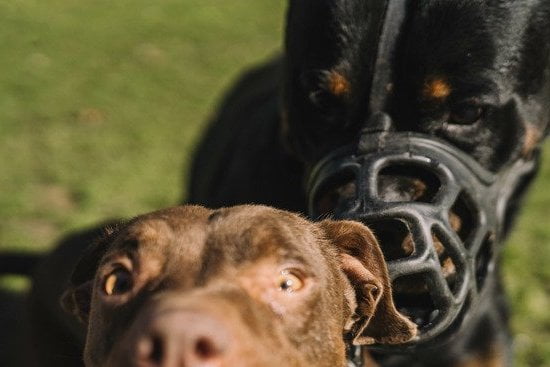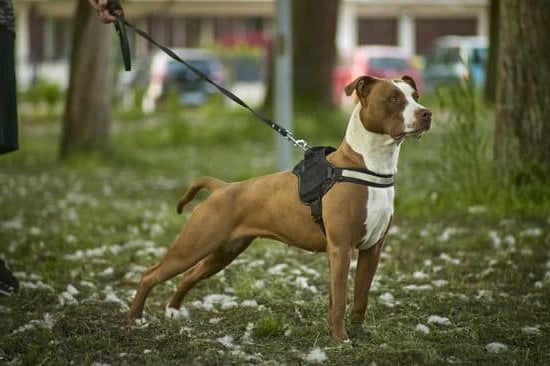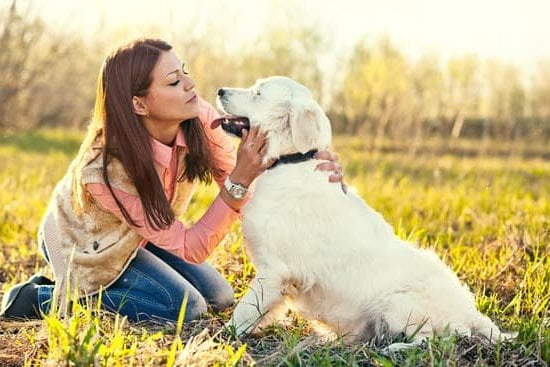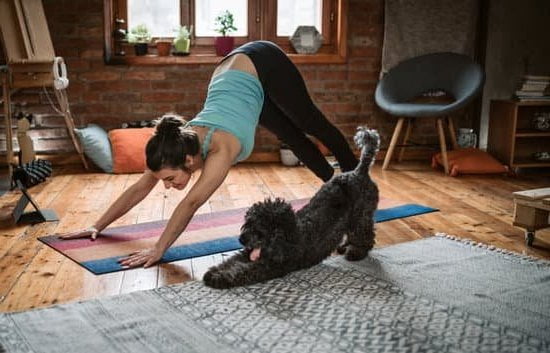Dog potty training is an essential aspect of owning a pet, and it plays a significant role in ensuring a harmonious coexistence between the dog and its owner. By establishing good potty habits early on, owners can prevent the stress and frustration that comes with dealing with accidents in the house. In this article, we will explore the importance of dog potty training and provide valuable insights on how to effectively train your furry friend.
When it comes to dog potty training, there are different methods to choose from, and it’s essential to find the right approach that suits both you and your dog. From crate training to using puppy pads or teaching your dog to signal when they need to go outside, understanding the various options available will help you make an informed decision that aligns with your lifestyle and your pet’s needs.
Establishing a potty training routine is crucial for success, as dogs thrive on structure and consistency. We’ll delve into the factors to consider when creating a schedule for your dog’s bathroom breaks and explore ways to effectively communicate the desired behavior.
Additionally, we’ll discuss setting realistic expectations for potty training success, common mistakes to avoid, tips for handling accidents, using positive reinforcement, troubleshooting challenges, and the pivotal role of patience and consistency in achieving successful dog potty training.
Choosing the Right Potty Training Method for Your Dog
When it comes to dog potty training, there are several methods that pet owners can choose from. Each method has its own set of advantages and challenges, so it’s important to consider your dog’s specific needs and your own lifestyle when selecting the right approach.
Crate Training
Crate training is a popular method for potty training dogs, especially for puppies. This method involves confining the dog to a crate when unsupervised and gradually increasing the amount of time they spend outside the crate. The idea is that dogs have an instinctual reluctance to urinate or defecate where they sleep, so using a crate can help teach them bladder control.
Paper Training
Paper training involves teaching the dog to eliminate on a designated area indoors, such as a pee pad or newspaper. This method is often used for small breeds or dogs living in apartments with limited outdoor access. While paper training can be convenient, it’s important to transition your dog to outdoor elimination once they are old enough.
Potty Pads
Potty pads are absorbent pads that can be placed on the floor indoors for dogs to use as a bathroom area. This method is similar to paper training but provides a more specific target for elimination. It’s important to regularly change and clean potty pads to prevent odor issues and encourage good hygiene practices in dogs.
When choosing a potty training method for your dog, consider their age, breed, and living situation. It’s also important to be consistent and patient as you work with your dog to establish good potty habits.
Establishing a Potty Training Routine
When it comes to dog potty training, establishing a routine is key to success. Consistency in the potty training schedule helps your dog understand when and where they are supposed to go potty, making accidents less likely. Here are some tips for creating an effective potty training routine for your furry friend:
1. Set specific times for potty breaks: Dogs thrive on routine, so try to take them out at the same times each day, such as first thing in the morning, after meals, and before bedtime.
2. Choose a designated potty area: Whether it’s a patch of grass in the backyard or a pee pad indoors, having a consistent spot for your dog to do their business will help reinforce good habits.
3. Use verbal cues: When taking your dog out to potty, use a specific phrase or word such as “go potty” to signal what you want them to do. This will help them understand the purpose of the potty break.
By following these steps and establishing a solid routine, you can make the dog potty training process smoother and more effective.
Remember that every dog is different and may respond differently to various methods of training. It’s important to be patient and consistent with your routine as you work towards successful potty training for your furry companion. With time, persistence, and positive reinforcement, you can help your dog learn good bathroom habits that will last a lifetime.
Setting Realistic Expectations for Potty Training Success
Setting realistic expectations for dog potty training success is crucial to the process. It’s important to remember that every dog is different and will learn at their own pace. Some dogs may pick up on potty training quickly, while others may take a bit longer to grasp the concept. It’s essential to be patient and understanding during this process, as getting frustrated or impatient can hinder your dog’s progress.
When setting realistic expectations for potty training success, it’s important to consider your dog’s age, breed, and individual personality. Puppies, for example, have smaller bladders and may need more frequent trips outside to go potty. Understanding these factors will help you set achievable goals for your dog’s potty training journey.
It’s also important to recognize that accidents will happen during the potty training process – this is normal. Instead of getting discouraged, use these accidents as learning opportunities for both you and your dog. By remaining patient and consistent with your training methods, you can help your dog achieve success in their potty training journey.
Overall, setting realistic expectations for dog potty training success involves understanding that it is a gradual process that requires time, patience, and consistency. By keeping these factors in mind and being mindful of your dog’s individual needs, you can set achievable goals for successful potty training outcomes.
Common Potty Training Mistakes to Avoid
Ignoring the Signs
One of the most common mistakes in dog potty training is ignoring the signs that your pup needs to go outside. Dogs often have specific behaviors or cues that indicate they need to relieve themselves, such as pacing, sniffing the ground, or circling a specific spot. It’s important for pet owners to pay attention to these signs and take their furry friend outside promptly.
Punishing Accidents
Another mistake to avoid is punishing your dog for having accidents indoors. Punishment can create anxiety and fear in your pet, which can actually make potty training more challenging. Instead of punishment, focus on positive reinforcement when your dog successfully goes potty outside.
Inconsistency
Consistency is crucial in dog potty training. Inconsistency in the training routine, such as varying the times that you take your dog out or not using a designated potty area, can confuse your pet and slow down the training process. It’s important to establish a consistent routine and stick to it to help your dog understand where and when they should go potty.
By avoiding these common mistakes in dog potty training, pet owners can set their furry friends up for success in learning this essential behavior. Adhering to positive reinforcement and maintaining consistency are key components of effective potty training for dogs.
Tips for Dealing With Accidents During Potty Training
Dealing with accidents during dog potty training can be frustrating, but it’s an inevitable part of the process. It’s important to remember that accidents are a natural part of learning for your dog, and how you react to them can have a big impact on the success of their training.
One important tip for dealing with accidents is to avoid punishing or scolding your dog when they have an accident. This will only create fear and anxiety around potty training, making the process more difficult.
Instead, focus on reinforcing positive behaviors. When your dog eliminates in the appropriate spot, be sure to praise and reward them. Positive reinforcement helps your dog associate the correct behavior with good things, making them more likely to repeat it in the future. Additionally, clean up accidents thoroughly to remove any lingering scent that may encourage your dog to continue eliminating in that spot.
It’s also important to closely supervise your dog during the potty training process. By keeping a close eye on your dog, you can better anticipate when they need to go outside and prevent accidents from happening in the first place. Pay attention to cues such as sniffing, circling, or scratching at the door, and take your dog outside immediately if you notice these behaviors.
| Dealing With Accidents During Potty Training | Tips |
|---|---|
| Avoid punishing or scolding your dog | Focus on reinforcing positive behaviors |
| Clean up accidents thoroughly | Closely supervise your dog |
Using Positive Reinforcement to Encourage Good Potty Behavior
Positive reinforcement is a crucial aspect of successful dog potty training. By rewarding your dog for good potty behavior, you can encourage them to continue with their progress and develop good habits. Here are some effective ways to use positive reinforcement in your dog potty training routine:
- Use treats: When your dog successfully goes potty in the designated area, immediately reward them with a tasty treat. This positive association will encourage them to repeat the behavior.
- Verbal praise: In addition to treats, verbal praise is also important. Use a happy and excited tone to let your dog know that they have done well.
- Physical affection: Many dogs respond well to physical affection, such as petting or belly rubs, as a form of positive reinforcement for good behavior.
It’s important to remember that timing is key when using positive reinforcement. The reward should be given immediately after your dog has finished going potty in the appropriate spot. This will help them make the connection between the behavior and the reward.
Consistency is also crucial when using positive reinforcement for dog potty training. Make sure that every time your dog follows through with good potty behavior, they receive the same type of reward. This will help reinforce the desired behavior and make it more likely for your dog to continue with their success in the future.
Overall, using positive reinforcement can greatly improve the effectiveness of your dog potty training efforts. By consistently rewarding good potty behavior, you can encourage your dog to develop long-lasting habits and reduce accidents in the house.
By incorporating these methods into your training routine, you can effectively use positive reinforcement to encourage good potty behavior in your beloved furry companion.
Troubleshooting Potty Training Challenges
When it comes to dog potty training, one of the most common challenges that pet owners face is dealing with stubbornness and resistance in their dogs. This can be frustrating, but it’s important to remember that every dog is different and may require a unique approach to potty training.
One of the first steps in addressing stubbornness and resistance in dogs during potty training is to determine the underlying cause. Some dogs may be resistant to potty training due to fear, anxiety, or past negative experiences. Understanding the root of the problem can help you tailor your training approach and make adjustments as needed.
It’s also important to consider the breed and age of your dog when addressing potty training challenges. Certain breeds may have specific traits or tendencies that can impact their receptiveness to potty training. Additionally, older dogs or those with health issues may require a different approach or additional patience when it comes to learning proper potty behavior.
In addition to understanding the individual needs and characteristics of your dog, utilizing positive reinforcement techniques can be highly effective in addressing stubbornness and resistance during potty training. By rewarding good behavior with treats, praise, or playtime, you can encourage your dog to make positive associations with using the designated bathroom area. This can help build confidence and motivation in your dog, leading to greater success in their potty training journey.
| Troubleshooting Tips | Details |
|---|---|
| Determine underlying cause | Understanding why your dog is resisting potty training can help tailor an effective approach. |
| Consider breed and age | Take into account breed-specific traits and age-related factors when troubleshooting potty training challenges. |
| Use positive reinforcement | Rewarding good behavior can encourage your dog to develop positive associations with potty training. |
The Role of Consistency and Patience in Successful Dog Potty Training
In conclusion, successful dog potty training requires a consistent and patient approach from dog owners. It is important to understand that establishing a routine, choosing the right training method, and setting realistic expectations are all crucial components of the potty training process. Dog owners must be prepared for setbacks and accidents along the way, but it is essential to remain patient and consistent in their approach.
Consistency is key when it comes to dog potty training. By taking your dog out at the same times every day and using the same commands, you can help reinforce good potty behavior. Patience is also important, as not all dogs will pick up on potty training right away. It is important to remain calm and avoid getting frustrated with your dog during the training process.
Additionally, positive reinforcement plays a significant role in encouraging good potty behavior in dogs. By praising and rewarding your dog for properly using the designated potty area, you can motivate them to continue exhibiting this desired behavior. Overall, with consistency, patience, and positive reinforcement, dog owners can successfully navigate the challenges of potty training and set their pets up for long-term success in this area.
Frequently Asked Questions
How Long Does It Take for a Dog to Be Potty Trained?
The time it takes to potty train a dog can vary depending on the breed, age, and individual dog. On average, it can take anywhere from a few weeks to several months for a dog to be fully potty trained.
How Do You Stop a Dog From Peeing and Pooping in the House?
To stop a dog from peeing and pooping in the house, it’s important to establish a consistent routine for bathroom breaks, reward good behavior, and clean up accidents properly to remove any lingering scent. Consistency and positive reinforcement are key.
What Is the Average Age a Dog Is Potty Trained?
The average age at which a dog is fully potty trained is typically between 4 to 6 months old. However, some dogs may take longer while others may catch on quicker. Patience and consistency are essential when potty training a dog.

Welcome to the blog! I am a professional dog trainer and have been working with dogs for many years. In this blog, I will be discussing various topics related to dog training, including tips, tricks, and advice. I hope you find this information helpful and informative. Thanks for reading!





